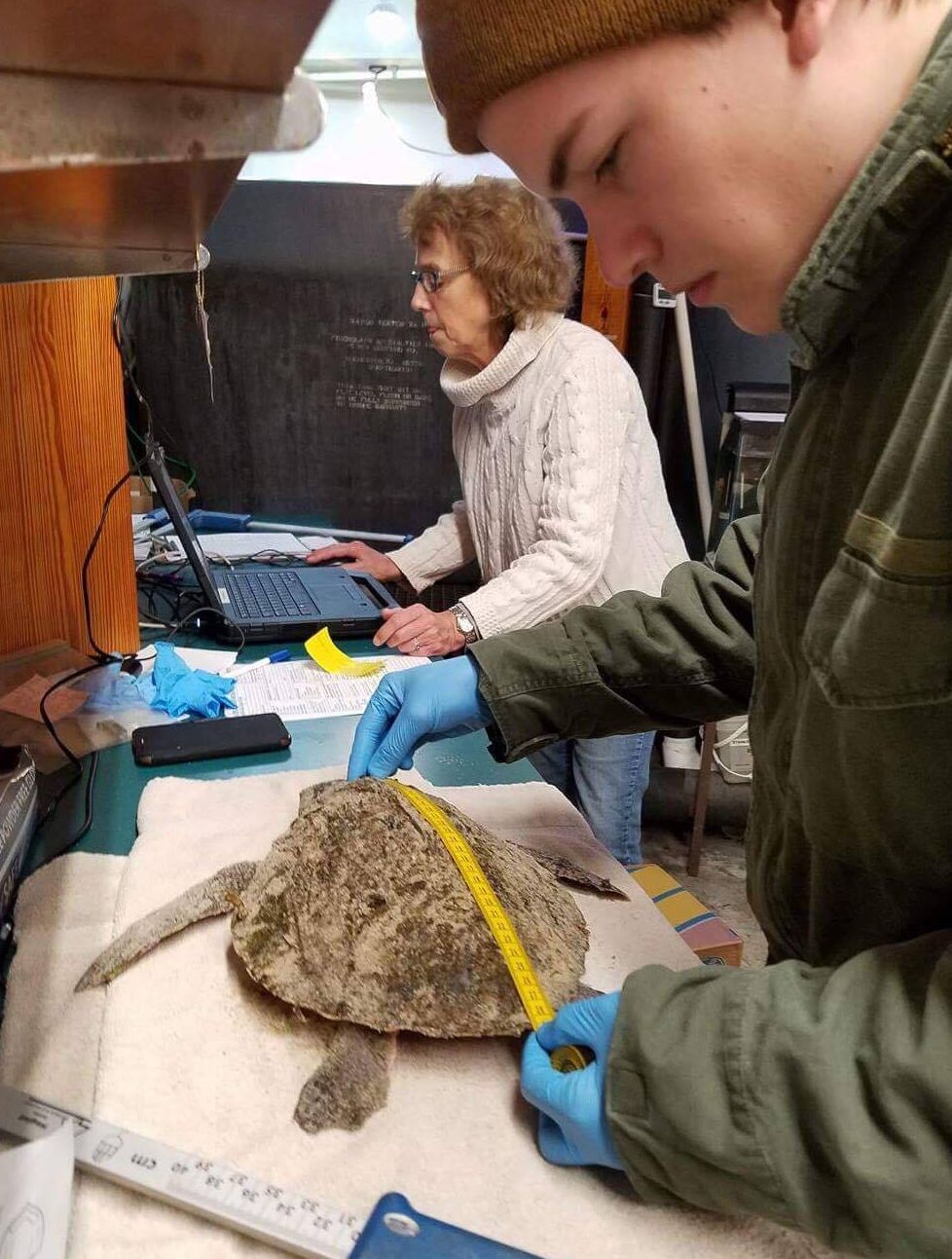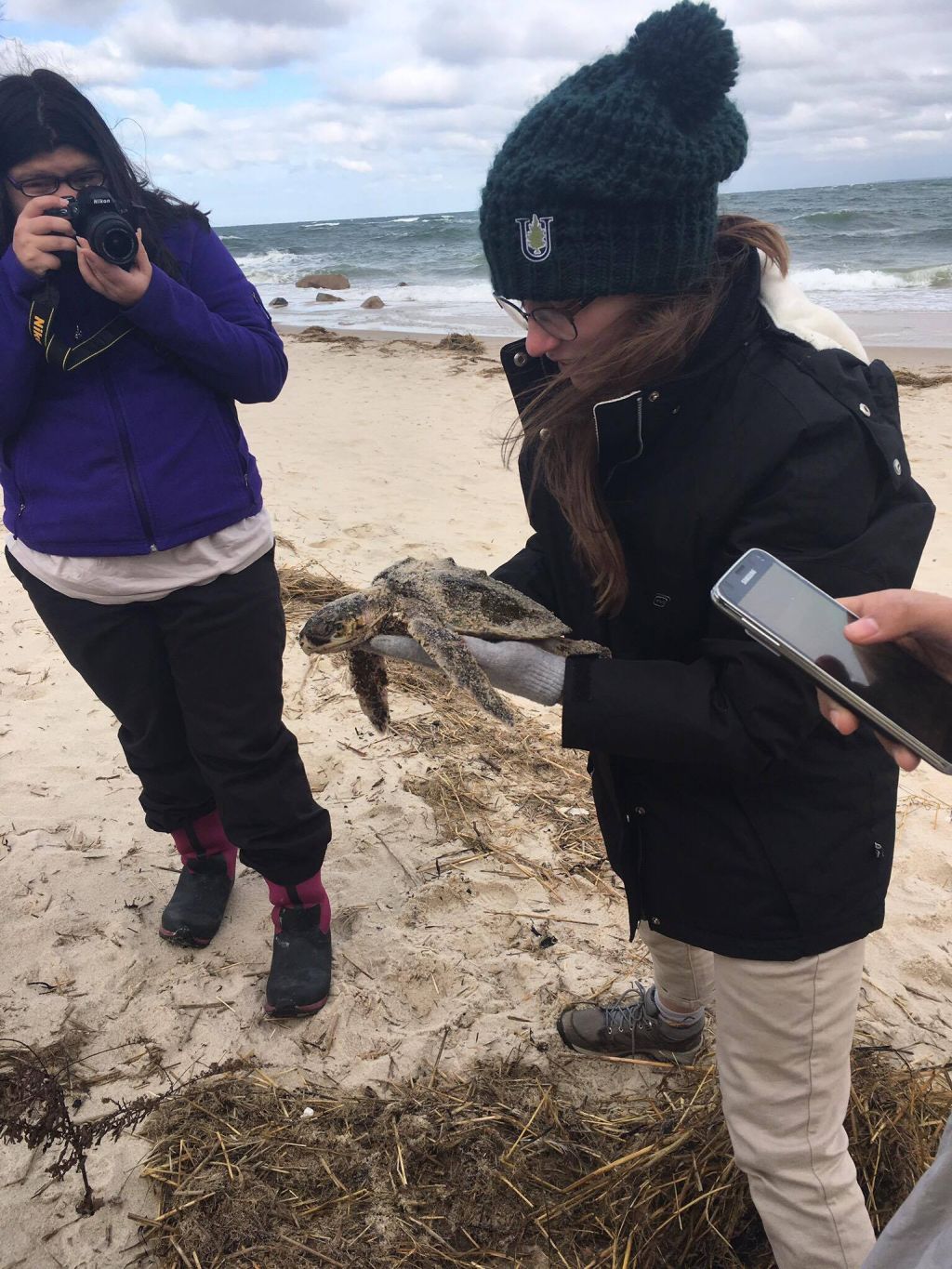Many of us in the Unity College Herpetology Club (myself included) had never been to Cape Cod before; even fewer had ever seen a sea turtle without a glass wall between us!
We were invited to volunteer with sea turtle rescue on the Cape in November and we happily accepted. We arrived the day after Thanksgiving. Melissa Lowe Cestaro, our go-to person and coordinator of everything that would be “sea turtle”, let us take a peek into the wet lab to see our first turtle—a very limp Kemp’s Ridley, the most endangered sea turtle in the world.

It can be very hard to tell a live cold-stunned turtle from a dead one.
I didn’t think they could look so dead, yet still be alive. But Melissa taught us how to tell. “If you pick them up and their heads don’t completely flop, they may still be alive,” she explained. She also mentioned subtle movements, especially with the eyes.

This green turtle may not look very happy but those raised flippers and partially opened eyes are good signs!
We also met Christine Bates, public programs coordinator at the sanctuary, who tasked us with helping run the Sea Turtle Open House held over Thanksgiving weekend. Manning our stations, we quizzed curious visitors about what a reptile is. We facilitated simulated research opportunities for younger visitors, giving them plastic sea turtles to measure and to practice gathering other data.

Author Gregory LeClair has a nice snake skin in front of him, part of the students’ efforts to teach about reptiles. (photo by Krill Carson)
While we slept that night, a horde of sea turtles came in. The increasingly strong winds coming from the northwest and the dropping temps stunned an impressive number of turtles. If it weren’t for the late night and early morning volunteers, many of these turtles may not have made it.
Later that morning, to cover more ground, we divided our resources and kept some students at the sanctuary to aid in processing turtles and some of us drove in convoy with Melissa to go pick up turtles as they were coming in.

Measuring the length of a cold-stunned Kemp’s ridley.
Overall, we ran through this process with nearly two dozen turtles that morning. Because of our efforts, some of the world’s most imperiled animals will make it back to the wild. There is no greater feeling than contributing to something like that; to know that something still exists on this planet because of you.

Unity students responded to calls about turtles found on the beach.
The folks at Mass Audubon are to thank for this wonderful opportunity. The chance to interact with the public was also incredibly useful. As developing wildlife professionals, being able to communicate with the public is very important and so we feel that this trip greatly benefited us in more ways than one.
We enthusiastically look forward to our next collaboration with the Wellfleet Bay crew and wish them luck as they continue the rest of what is sure to be a busy sea turtle season. We’d also like to particularly thank Melissa Lowe and Christine Bates for their hard work and coordination with us. We had a blast!
Gregory LeClair
Unity College Herpetology Club

